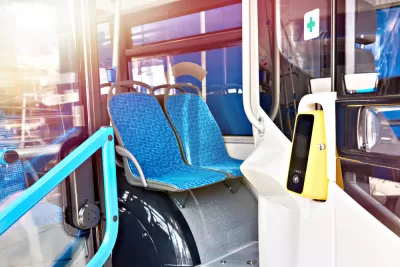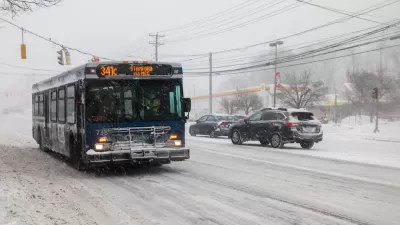Many of the riders who rely on public transit the most are also least likely to be able to use cashless fare systems.

A study from the University of Oregon reveals that eliminating cash payments on public transit systems can harm low-income users, who are often most dependent on transit for daily needs.
“They’re also less likely to have a credit card, smartphone, or even the cash reserves to pay for a monthly transit pass upfront,” and have a harder time reloading fare cards without cash options, the study showed. “If people have to visit a gas station or convenience store to reload their bus card with cash, how will they get there?”
“Maintaining cash fare boxes is very expensive; each one can cost thousands of dollars. But accepting cash also increases ridership, giving people more flexibility to hop on a bus without having to jump through hoops to set up an account or link a credit card.” In other words, transit agencies could still lose revenue from lost ridership despite the savings of eliminating cash fareboxes.
The report’s author, Professor Anne Brown, points out the simplest solution: no fares for anyone. “Fares make up only a part of the budget for most transit agencies, and that financial gap could be closed in other ways.” Proponents of fare-free transit argue that—when paired with effective service—it eliminates a major expense for low-income commuters and encourages more ridership.
FULL STORY: Study: Cash payments remain a key part of equitable transit

Planetizen Federal Action Tracker
A weekly monitor of how Trump’s orders and actions are impacting planners and planning in America.

San Francisco's School District Spent $105M To Build Affordable Housing for Teachers — And That's Just the Beginning
SFUSD joins a growing list of school districts using their land holdings to address housing affordability challenges faced by their own employees.

The Tiny, Adorable $7,000 Car Turning Japan Onto EVs
The single seat Mibot charges from a regular plug as quickly as an iPad, and is about half the price of an average EV.

With Protected Lanes, 460% More People Commute by Bike
For those needing more ammo, more data proving what we already knew is here.

In More Metros Than You’d Think, Suburbs are Now More Expensive Than the City
If you're moving to the burbs to save on square footage, data shows you should think again.

The States Losing Rural Delivery Rooms at an Alarming Pace
In some states, as few as 9% of rural hospitals still deliver babies. As a result, rising pre-term births, no adequate pre-term care and "harrowing" close calls are a growing reality.
Urban Design for Planners 1: Software Tools
This six-course series explores essential urban design concepts using open source software and equips planners with the tools they need to participate fully in the urban design process.
Planning for Universal Design
Learn the tools for implementing Universal Design in planning regulations.
Smith Gee Studio
City of Charlotte
City of Camden Redevelopment Agency
City of Astoria
Transportation Research & Education Center (TREC) at Portland State University
US High Speed Rail Association
City of Camden Redevelopment Agency
Municipality of Princeton (NJ)





























